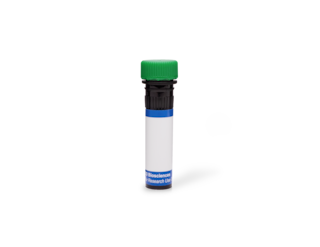-
Reagents
- Flow Cytometry Reagents
-
Western Blotting and Molecular Reagents
- Immunoassay Reagents
-
Single-Cell Multiomics Reagents
- BD® OMICS-Guard Sample Preservation Buffer
- BD® AbSeq Assay
- BD® Single-Cell Multiplexing Kit
- BD Rhapsody™ ATAC-Seq Assays
- BD Rhapsody™ Whole Transcriptome Analysis (WTA) Amplification Kit
- BD Rhapsody™ TCR/BCR Next Multiomic Assays
- BD Rhapsody™ Targeted mRNA Kits
- BD Rhapsody™ Accessory Kits
- BD® OMICS-One Protein Panels
-
Functional Assays
-
Microscopy and Imaging Reagents
-
Cell Preparation and Separation Reagents
Old Browser
This page has been recently translated and is available in French now.
Looks like you're visiting us from {countryName}.
Would you like to stay on the current location site or be switched to your location?
BD Transduction Laboratories™ Purified Mouse Anti-SHP2
Clone 79/PTP1D/SHP2 (RUO)





Western blot analysis of SHP2 (PTP1D) on a Jurkat cell lysate (Human T-cell leukemia; ATCC TIB-152). Lane 1: 1:2500, lane 2: 1:5000, lane 3: 1:10,000 dilultion of the mouse anti- SHP2 (PTP1D) antibody. SHP2 has been reported to be observable in a range between 65-72 kD.

Western blot analysis of SHP2 (PTP1D) on a Jurkat cell lysate (Human T-cell leukemia; ATCC TIB-152). Lane 1: 1:2500, lane 2: 1:5000, lane 3: 1:10,000 dilultion of the mouse anti- SHP2 (PTP1D) antibody. SHP2 has been reported to be observable in a range between 65-72 kD.

Immunofluorescence staining of A431 cells (Human epithelial carcinoma; ATCC CRL-1555).




Regulatory Status Legend
Any use of products other than the permitted use without the express written authorization of Becton, Dickinson and Company is strictly prohibited.
Preparation And Storage
Recommended Assay Procedures
Western blot: Please refer to http://www.bdbiosciences.com/pharmingen/protocols/Western_Blotting.shtml
Product Notices
- Since applications vary, each investigator should titrate the reagent to obtain optimal results.
- Please refer to www.bdbiosciences.com/us/s/resources for technical protocols.
- Caution: Sodium azide yields highly toxic hydrazoic acid under acidic conditions. Dilute azide compounds in running water before discarding to avoid accumulation of potentially explosive deposits in plumbing.
- Source of all serum proteins is from USDA inspected abattoirs located in the United States.
Companion Products



SHP2 (also known as PTP1D, Syp, SHPTP2 and PTP2C) is a member of the cytosolic class of protein-tyrosine phosphatases (PTPs). SHP2 has been reported to contain two SH2 domains where both SH2 domains are N-terminal to the PTP catalytic domain. The expression of SHP2 has been reported to be highest in brain, heart, and kidney. The PTPs are thought to function with other protein-tyrosine kinases to maintain intracellular protein phosphotyrosine homeostasis and cell cycle progression. The presence of SH2 domains in SHP2 (PTP1D) has prompted speculation that binding to specific phosphorylated tyrosine residues is key to its function. SHP2 (PTP1D) is tyrosine- phosphorylated and activated in response to stimulation with EGF or PDGF.
Development References (5)
-
Duchene J, Schanstra JP, Pecher C. A novel protein-protein interaction between a G protein-coupled receptor and the phosphatase SHP-2 is involved in bradykinin-induced inhibition of cell proliferation. J Biol Chem. 2002; 277(43):40375-40383. (Biology: Immunoprecipitation, Western blot). View Reference
-
Freeman RM, Plutzky J, Neel BG. Identification of a human src homology 2-containing protein-tyrosine-phosphatase: a putative homolog of Drosophila corkscrew. Proc Natl Acad Sci U S A. 1992; 89(23):11239-11243. (Biology). View Reference
-
Kabat J, Borrego F, Brooks A, Coligan JE. Role that each NKG2A immunoreceptor tyrosine-based inhibitory motif plays in mediating the human CD94/NKG2A inhibitory signal. J Immunol. 2002; 169(4):1948-1958. (Biology: Immunofluorescence). View Reference
-
Kontaridis MI, Liu X, Zhang L, Bennett AM. Role of SHP-2 in fibroblast growth factor receptor-mediated suppression of myogenesis in C2C12 myoblasts. Mol Cell Biol. 2002; 22(11):3875-3891. (Biology: Immunoprecipitation, Western blot). View Reference
-
Vogel W, Lammers R, Huang J, Ullrich A. Activation of a phosphotyrosine phosphatase by tyrosine phosphorylation. Science. 1993; 259(5101):1611-1614. (Biology). View Reference
Please refer to Support Documents for Quality Certificates
Global - Refer to manufacturer's instructions for use and related User Manuals and Technical data sheets before using this products as described
Comparisons, where applicable, are made against older BD Technology, manual methods or are general performance claims. Comparisons are not made against non-BD technologies, unless otherwise noted.
For Research Use Only. Not for use in diagnostic or therapeutic procedures.